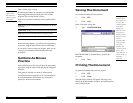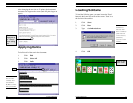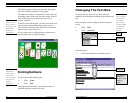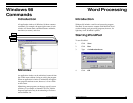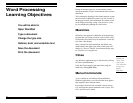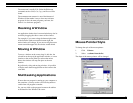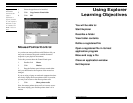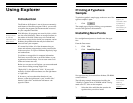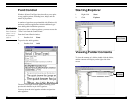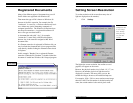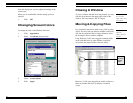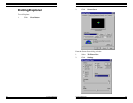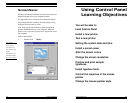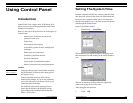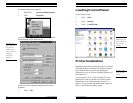
Windows 98, Level One
Training Express
Windows 98, Level One
Training Express18
Using Explorer
Introduction
The Windows 98 Explorer is one of the most commonly-
used features of the entire program. With it, you are able
to organize the programs and documents that are stored
on your computer's hard disk.
With Windows 98, programs are stored in folders, which
are also called directories. These are storage locations on
the surface of the disk. Folders may exist on both hard
disks, those storage devices inside your computer, and on
diskettes, the portable disks that may be inserted and
removed from your computer.
If it weren't for folders, all of the documents that you
create and software programs that you buy would reside
in the same place—in a pile of filenames hopelessly large
and cumbersome.
Use folders as storage bins for computer information.
Feel free to move files into or out of the folders as your
organizational needs change. You can even remove old
folders and create new ones.
Before you can start to use Explorer, you must understand
a new mouse clicking concept: Right-click.
"Right-click" is the opposite of "click." If you would
normally click the left mouse button, use the right button
to "right-click."
If, however, you have altered the function of your
buttons, so that the right button is your "normal click,"
then the "right-click" would be the left button—the
opposite button.
Folders are
storage locations
on your disk,
either hard disk or
floppy diskette.
39
Printing A Typeface
Sample
To print the typeface's sample page, make sure one of the
typeface samples is open:
1. Click
The sample page will print, offering you a permanent
record of the typeface's characteristics.
Installing New Fonts
It's a straightforward process to install a new font type-
face.
From the Fonts menu:
1. Click File
2. Click Install New Font...
CD-ROMs are the
most common
method of
delivering new
typefaces.
If you use multiple
typefaces, it's
convenient to have
a printed set of
each typeface's
characteristics for
easy reference.
New typefaces may be installed from diskette, CD-ROM,
or network drive.
The following example, demonstrates installing the
"AlienEye" typeface from a CD-ROM, which is desig-
nated as the "E:" drive on the computer.
3. Select the drive and folder that contains the
typefaces that you wish to install.



